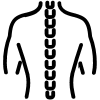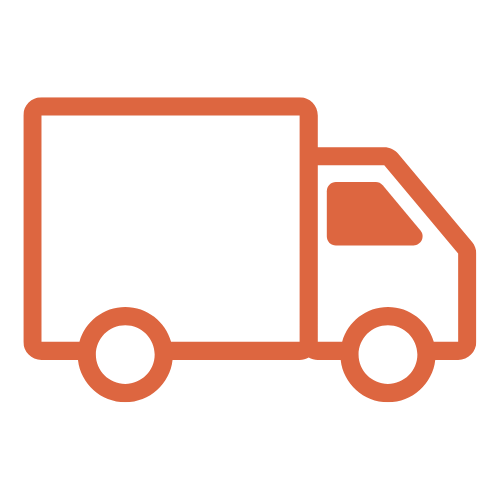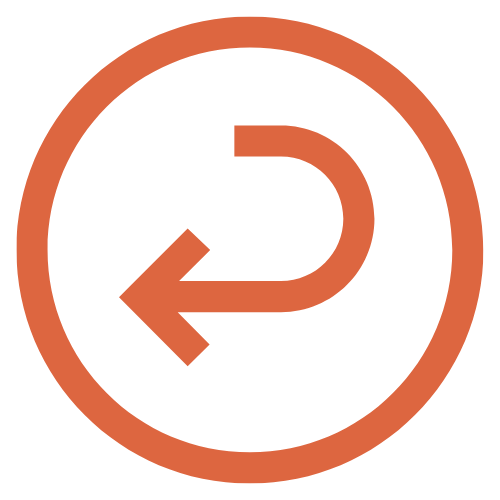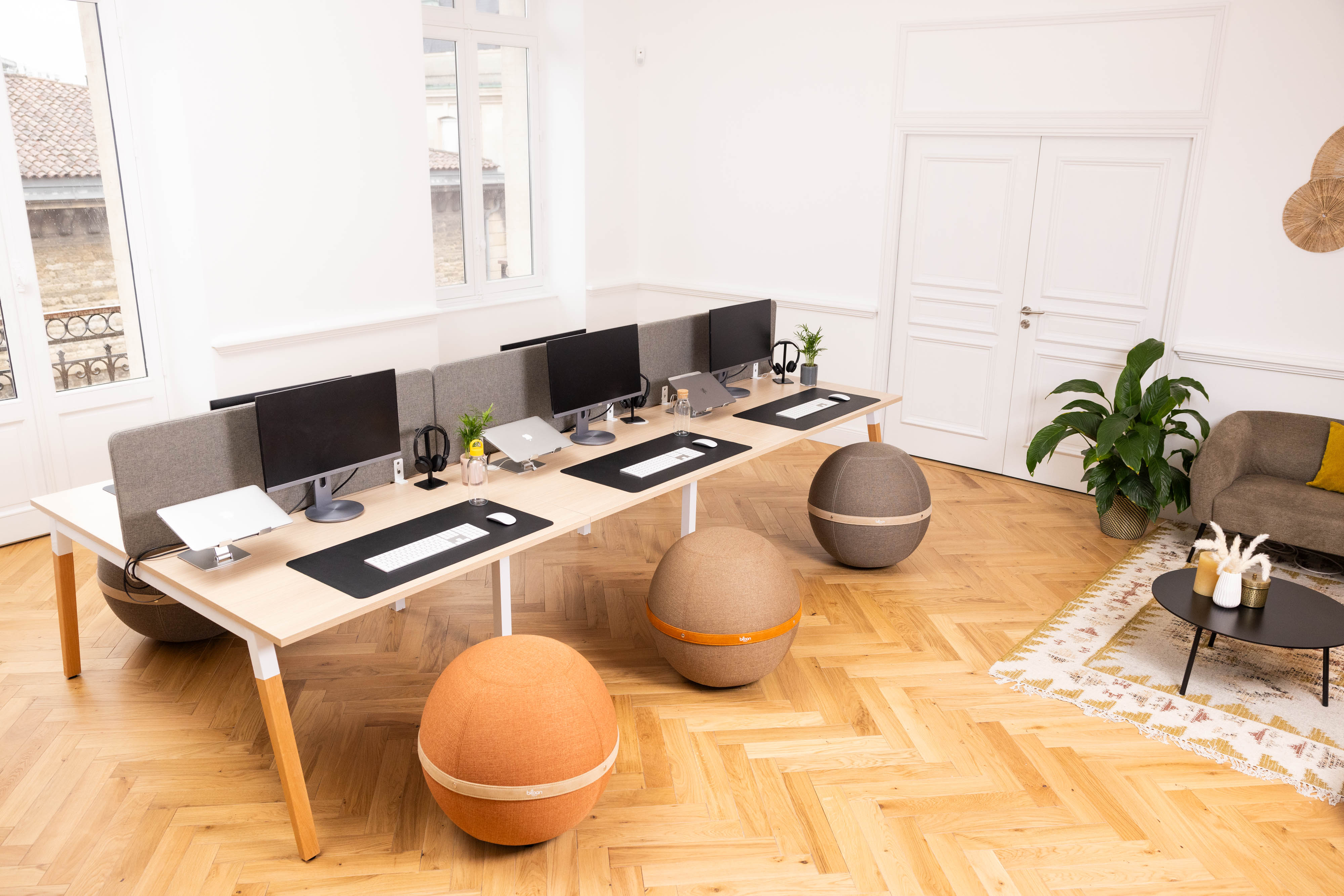Looking for ways to relieve back pain? You've come to the right place! In this article, we'll teach you how to maintain perfect posture, provide specific exercises and stretches to incorporate into your daily routine, and offer gentle remedies and ergonomic accessories to help prevent and relieve back pain.
Adopt perfect posture
Adopting perfect posture is essential for relieving back pain. To maintain good posture, make sure your back is straight and aligned while sitting or standing. When sitting for long periods, avoid slouching or leaning forward excessively, as this can damage your back. You can also use accessories or an ergonomic chair, such as a ball chair, which allows you to maintain perfect posture and stay active.
If you would like to know more about the benefits of a ball chair on your posture, check out our article: Swiss ball at the office: the benefits for your posture and productivity. To learn how to adopt an effective posture on your ball chair, you can also check out our article on how to sit on a ball seat.
Exercises and stretches to relieve your back pain
Prone Extension
To perform the prone extension to relieve back pain, lie on your stomach, bend your arms, and place your hands flat on the floor near your shoulders. Then, lift your upper body off the floor, keeping your hips and lower body firmly in contact with the floor. Hold this position for 10 to 15 seconds, then slowly return to your starting position. This exercise will help stretch your back muscles and relieve tension.
Seated Extension
The seated extension is an easy exercise that can be performed at work. Sit on a chair with your back straight and your feet flat on the floor. Place your hands on the edge of the chair behind you and lean your torso back, keeping your shoulders down. Hold this position for 10 to 20 seconds.
Seated flexion
This exercise helps improve spinal mobility. In a seated position with your back straight and feet flat on the floor, tilt your torso forward, bringing your chin toward your chest while rounding your back. Hold this position for 10 to 20 seconds, breathing deeply.
Standing Extension
The standing lunge is also a simple exercise that can be done anywhere to relieve back pain. Place your hands on your hips while standing with your feet shoulder-width apart. Gently lean your torso back while pushing your hips forward. Hold this position for 10 to 20 seconds. This exercise is effective for stretching your back muscles and improving spinal mobility.
Cobra Exercise
The cobra exercise is a popular stretch that will help strengthen your back muscles and improve your flexibility. Lying on your stomach with your hands flat on the floor near your shoulders, lift your chest by pushing upward and lengthening your spine. Keep the rest of your lower body on the floor. Hold this position for 10 to 30 seconds.

The prone extension exercise and the cobra exercise are similar, however the cobra exercise targets spinal extension, while the prone extension targets the lower back.
Gentle Tips and Remedies for Back Pain
Heat and cold for back pain
Using heat and cold are effective in relieving back pain. For acute pain, you can use a hot water compress, a hot water bottle, or a heating pad several times a day. You can also take a nice warm bath with Epsom salts to relax your muscles and relieve back pain.
For inflammatory pain or swelling, you can use an ice pack wrapped in a towel to apply cold to the affected area for about 15 minutes.
Breathing techniques
Deep breathing can also help relieve back pain by promoting muscle relaxation and reducing stress. Sit comfortably, inhale through your nose, expanding your abdomen, and then completely release the air from your lungs. Repeat this exercise several times, remaining focused. You can try other breathing techniques such as diaphragmatic breathing or deep belly breathing.
Ergonomic accessories to relieve back pain
Bloon Balloon Seat

The Bloon ball chair is an ergonomic and multifunctional office chair that allows you to stay active while maintaining perfect posture at your desk. Using a ball chair reduces pressure on your spine and maintains a dynamic posture. To learn more about the benefits of a ball chair for your posture, please read our article: Swiss ball at the office: the benefits for your posture and productivity.
Standing desk
A standing desk is an effective alternative if you spend long hours sitting down to work. A standing desk allows you to alternate between sitting and standing, which helps improve blood circulation and reduce pressure on your back. This type of desk is usually height-adjustable, allowing you to customize your working position.

Ergonomic wrist rest
An ergonomic wrist rest can help reduce tension in your arm and shoulder muscles by providing support while you work at your computer. The wrist rest helps prevent pain caused by poor typing posture.
Foam roller
Foam rolling can be used in a variety of ways, from stretching tight muscles to massaging your back. Foam rolling is an easy tool to incorporate into your routine.
Adjustable foot support
An adjustable foot support helps improve your posture by promoting back alignment. It helps relieve back pain and improve blood circulation in the legs.
Ultimately, by adopting proper posture, practicing appropriate exercises and stretches, and using ergonomic accessories, you can relieve and prevent back pain.
FAQ: Everything you need to know about how to relieve back pain?
Can back pain be relieved with medication?
Yes, some medications such as ibuprofen or paracetamol can help relieve back pain temporarily, but they won't address the source of the problem. That's why it's important to consult a healthcare professional.
How to get rid of back pain quickly?
To quickly relieve back pain, we recommend applying heat or ice to the affected area. You can also do gentle stretches or practice relaxation exercises.
What is the best position when you have back pain?
The best solution for back pain depends on the cause of the pain. However, generally, the ideal position for back pain is to lie on your back with your knees bent or on your side with your knees tucked toward your chest.
How to unblock back pain?
To relieve your back pain, you can opt for gentle stretches, massages, heat, cold, or deep breathing techniques.
What is the strongest over-the-counter pain reliever for back pain?
Ibuprofen and naproxen are among the strongest nonsteroidal anti-inflammatory drugs (NSAIDs) available over the counter for back pain relief. However, it is important to follow the package instructions and not exceed the recommended dose.
Is cold good for back pain?
If you are suffering from inflammation and feeling numb, applying cold can greatly help relieve the pain.
In what situations should the application of ice or heat not be recommended for back pain relief?
Applying heat or ice should not be recommended if you have a serious injury or acute inflammation, a burning or tingling sensation, loss of sensation or poor circulation in the painful area, or if you have skin problems such as open wounds or frostbite.
How often should I do exercises and stretches to relieve back pain?
To relieve back pain, we recommend incorporating exercises and stretches into your routine several times a week.
How to choose the right pillow or mattress to prevent back pain?
When choosing the right pillow or mattress, try to opt for models that provide adequate support for your back and neck, keeping your spine aligned while you sleep. A medium to firm mattress is generally recommended for most people with back pain.
What are the signs that it's time to see a healthcare professional for my back pain?
If your pain persists for several days or worsens, if you experience numbness, tingling, a fever, or other specific symptoms, you should consult a professional as soon as possible. To learn more about the symptoms that indicate severe back pain, you can read our article: How to know if back pain is serious.
Are there any recommended sleeping positions to avoid back pain?
The ideal sleeping position to avoid back pain is on your back or on your side with a pillow supporting your head. You can also place a pillow between your knees if you sleep on your side. Avoid sleeping on your stomach, as this puts excessive pressure on your back and neck.












